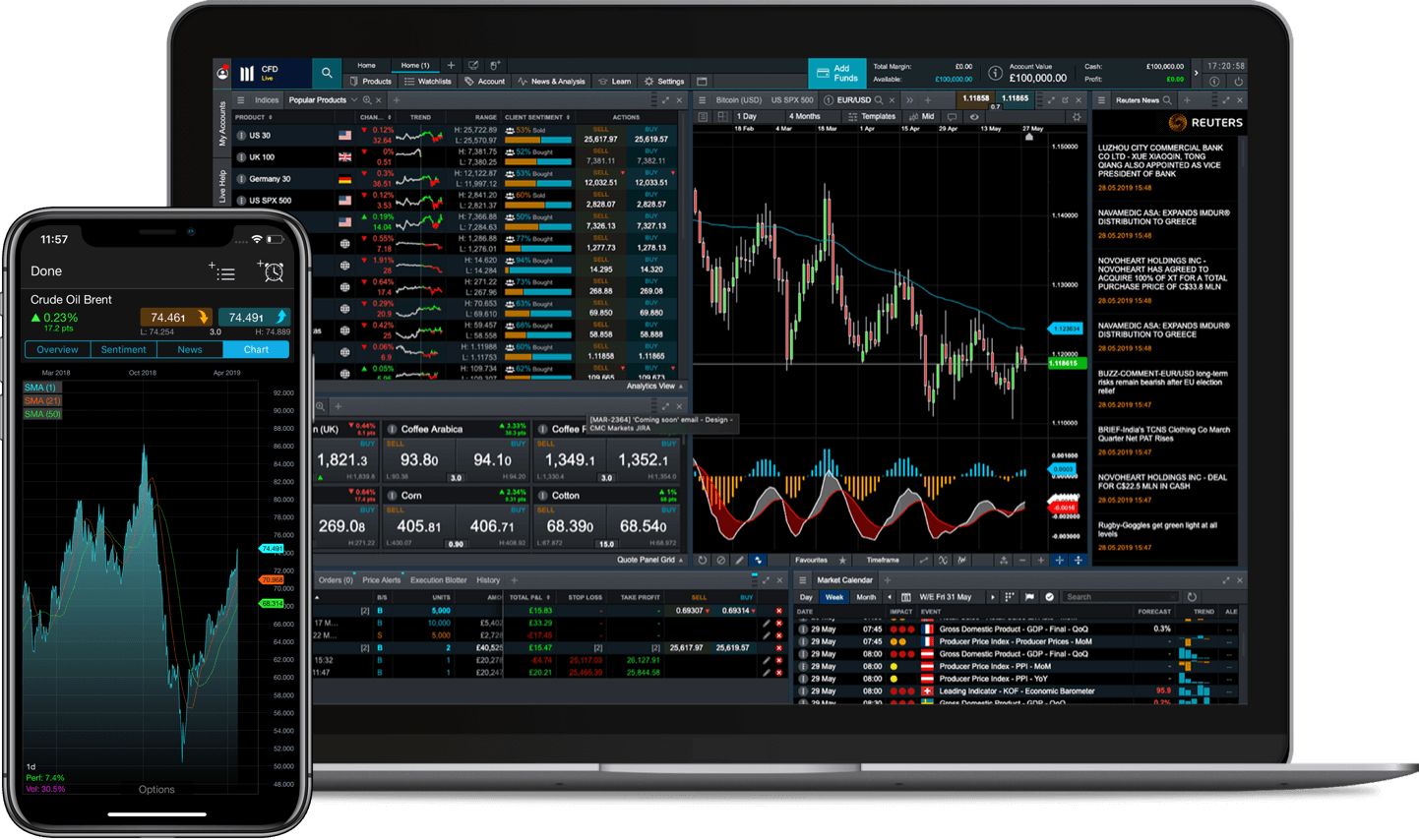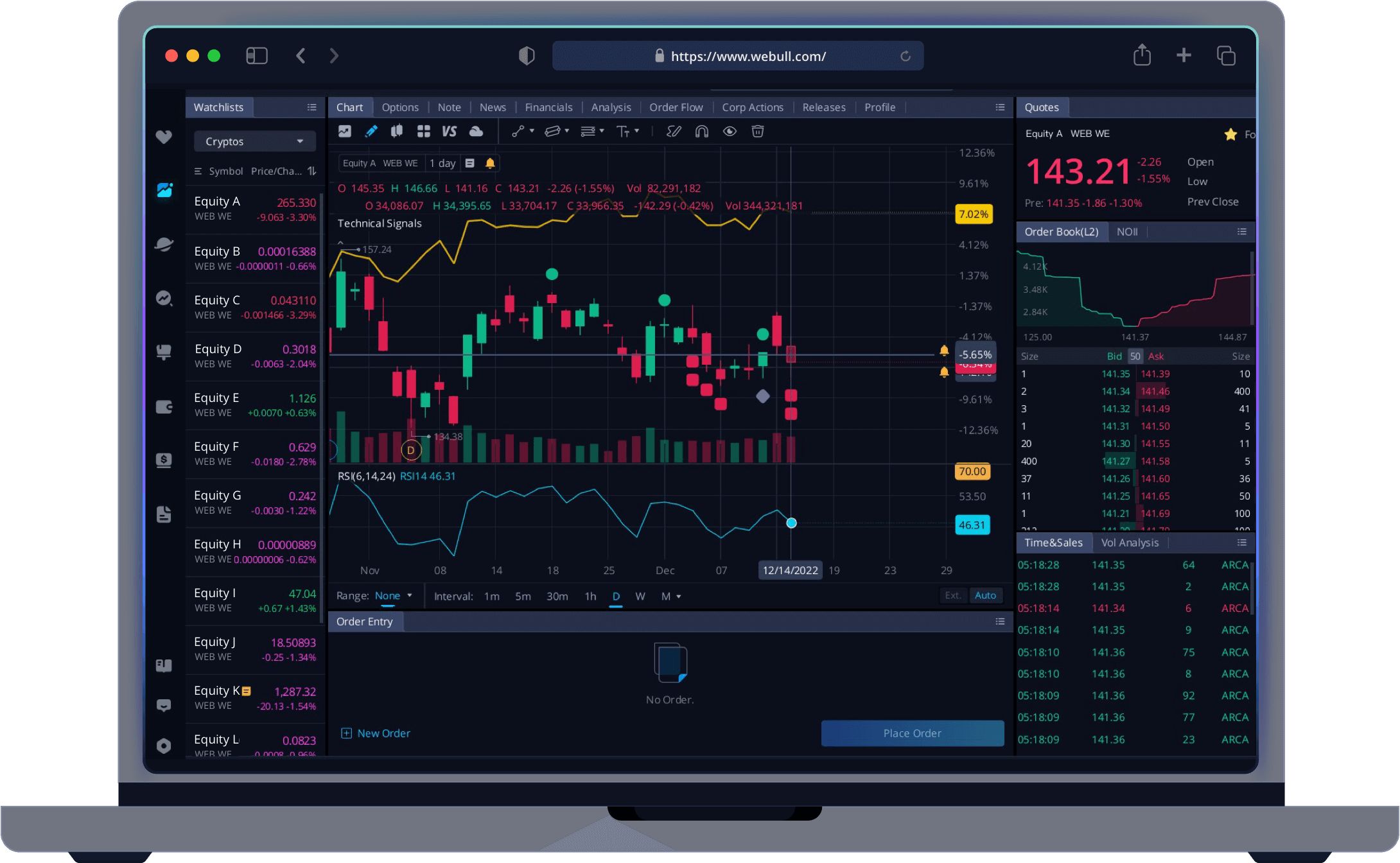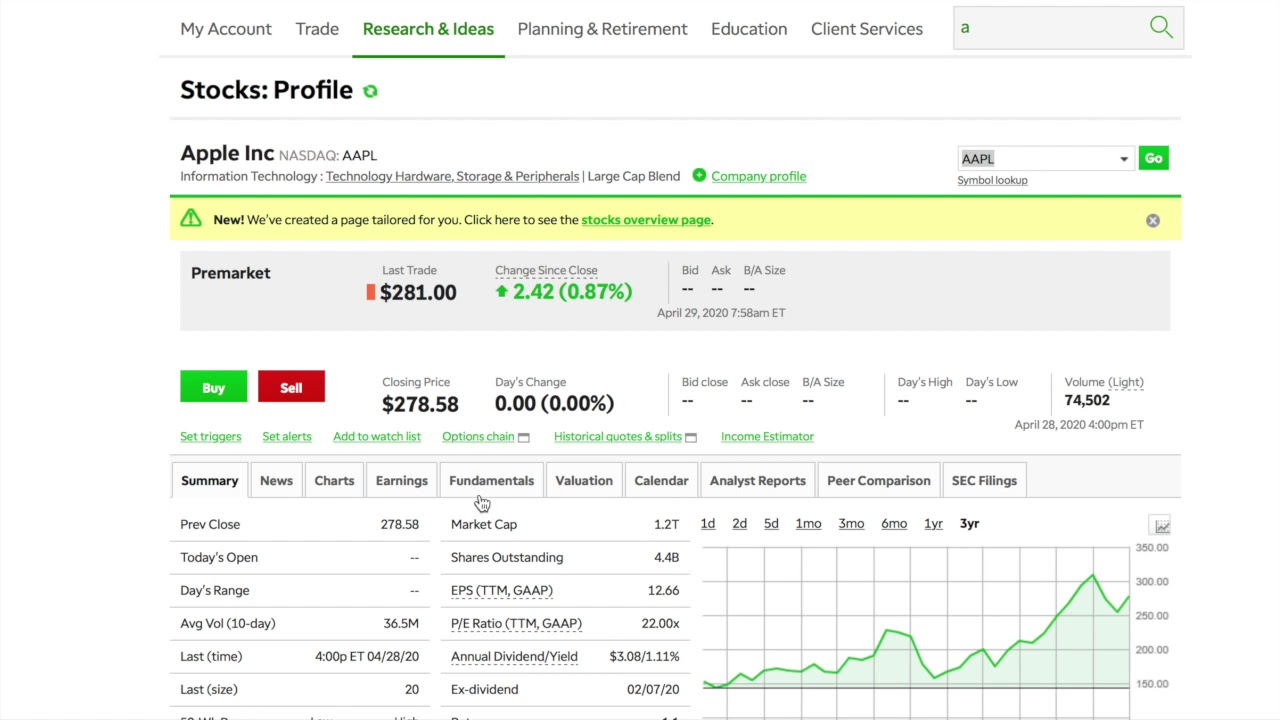Introduction
Welcome to the world of options trading! Whether you are a seasoned investor or just starting out, options trading can offer a unique and exciting way to grow your financial portfolio. In this article, we will guide you through the process of practicing options trading, from understanding the basics to selecting a brokerage and implementing various strategies.
Options trading involves buying and selling contracts that give you the right, but not the obligation, to buy or sell an underlying asset at a specific price within a certain timeframe. This flexibility makes options trading a popular choice for investors looking to hedge risk, generate income, or speculate on market movements.
Before diving into the world of options trading, it’s crucial to understand the terminology, market dynamics, and risk associated with this investment strategy. Options can be complex, but with the right knowledge and practice, you can harness their power to your advantage.
Choosing the right brokerage is a vital first step in options trading. Look for a reputable brokerage that offers a user-friendly interface, competitive pricing, and a wide range of options products to trade. Consider factors such as customer support, educational resources, and research tools to assist you in making informed trading decisions.
Once you have selected a suitable brokerage, the next step is to open a trading account. This will involve submitting the required documents, completing the necessary paperwork, and funding your account. Most brokerages offer different types of accounts, such as individual or joint accounts, as well as various funding options to suit your needs.
As a beginner in options trading, it’s essential to start with the basics. Familiarize yourself with basic options strategies such as buying call or put options, selling covered calls, and executing spreads. These strategies will help you understand the relationship between options prices and the underlying assets.
Once you have grasped the fundamentals, you can move on to advanced options strategies. These strategies involve combining multiple options or using advanced techniques to take advantage of specific market conditions. However, it is crucial to fully understand the risks associated with these strategies and only implement them when you have gained sufficient experience.
Risk management and compliance are essential aspects of options trading. Develop a solid risk management plan, setting limits on the amount of capital you are willing to risk on each trade. Understand the potential outcomes of your trades and be prepared to adjust your strategies if the market moves against you. Additionally, stay updated on regulatory requirements and adhere to compliance guidelines to ensure your trading activities remain within legal boundaries.
Practice makes perfect, and paper trading is an excellent way to hone your skills without risking real money. Most brokerages offer paper trading accounts that simulate live trading conditions. Use this opportunity to practice your strategies, test different approaches, and gain confidence in your trading abilities before venturing into the live market.
Understanding Options Trading
In order to effectively practice options trading, it’s vital to have a clear understanding of how options work and the key concepts associated with this investment strategy.
An option is a contract that gives you the right, but not the obligation, to buy or sell an underlying asset at a specific price within a certain timeframe. The underlying asset can be stocks, commodities, indices, or even currencies. Options are classified into two types: call options and put options.
Call options give the holder the right to buy the underlying asset at a specified price, known as the strike price, before the expiry date. Put options, on the other hand, give the holder the right to sell the underlying asset at the strike price before the expiry date.
Options traders can profit from changes in the price of the underlying asset by buying or selling options contracts. If you believe the price of the asset will rise, you can buy call options and potentially profit from the price increase. Conversely, if you expect the price of the asset to fall, you can buy put options or sell call options, with the possibility of generating profits through a price decline.
The price of an option is determined by several factors, including the current price of the underlying asset, the strike price, the expiration date, market volatility, and interest rates. These factors interact to influence the option’s value and can impact your trading strategies.
Two crucial concepts in options trading are intrinsic value and time value. Intrinsic value is the difference between the current price of the underlying asset and the strike price, if it is favorable for the buyer. Time value, on the other hand, is the additional premium paid for the possibility of the option’s value increasing before expiration.
Options trading also involves understanding different trading styles, such as American-style options and European-style options. American-style options can be exercised at any time before the expiry, while European-style options can only be exercised on the expiration date.
As an options trader, it’s essential to be aware of the risks involved. Options trading can be highly volatile and speculative, and it’s possible to lose your investment if the market doesn’t move in the anticipated direction. Proper risk management, including setting stop-loss orders, diversifying your portfolio, and using appropriate position sizing, can help mitigate potential losses.
By understanding the fundamental concepts of options trading, you can make more informed trading decisions and develop effective strategies. Practice, research, and continuous learning are essential components of mastering options trading, enabling you to navigate the dynamic and potentially rewarding world of options trading.
Selecting a Brokerage
Choosing the right brokerage is a crucial step in practicing options trading. A brokerage serves as your gateway to the financial markets and plays a vital role in facilitating your trading activities. Here are some key factors to consider when selecting a brokerage:
Reputation and Reliability: Look for a brokerage with a solid reputation and a track record of reliable service. Check online reviews, industry rankings, and testimonials from other traders to gain insights into their reliability and customer satisfaction.
Options Trading Platform: Evaluate the brokerage’s trading platform, as it will be your primary tool for executing trades. The platform should be user-friendly, intuitive, and offer advanced features such as real-time data, charting, and options analysis tools. Test out the demo or trial version of the platform to ensure it meets your requirements.
Pricing and Fees: Compare the fees and commission structures of different brokerages. Look for competitive pricing that aligns with your trading frequency and volume. Consider the costs associated with options contracts, account maintenance fees, and any additional charges for research or education tools.
Options Product Range: Ensure that the brokerage offers a wide range of options products to trade. This includes various asset classes, such as stocks, commodities, indices, and currencies. Having access to a diverse range of options contracts allows you to implement different strategies and take advantage of various market conditions.
Customer Support: Check the availability and responsiveness of customer support. Find out if they offer multiple channels of communication, such as phone, email, and live chat, and ensure that their support team is knowledgeable and able to address your queries and concerns effectively.
Educational Resources and Research: Look for a brokerage that provides educational resources and research tools to help enhance your options trading skills. These may include webinars, tutorials, articles, and market analysis reports. A brokerage that invests in trader education demonstrates its commitment to helping its clients succeed.
Regulation and Compliance: Ensure that the brokerage is regulated by a reputable financial authority. Regulatory oversight helps ensure fair practices, client protection, and adherence to compliance guidelines. Check if the brokerage segregates client funds and how they handle security measures to safeguard your personal and financial information.
Account Funding and Withdrawal: Evaluate the funding options available and the ease of depositing and withdrawing funds from your trading account. Consider factors such as transaction fees, processing time, and the availability of different payment methods to suit your preferences.
By thoroughly researching and considering these factors, you can choose a brokerage that aligns with your goals, preferences, and trading style. Remember that selecting the right brokerage is not a one-size-fits-all approach, as what works for one trader may not work for another. Take the time to evaluate and compare different options to find a brokerage that best suits your needs and provides a seamless and rewarding options trading experience.
Opening a Trading Account
Once you have selected a suitable brokerage, the next step in practicing options trading is to open a trading account. Opening a trading account involves several important steps:
Documentation: The first step is to gather the necessary documentation required by the brokerage. This typically includes proof of identity, such as a valid passport or driver’s license, and proof of address, such as a utility bill or bank statement. Make sure you have clear copies of these documents ready for submission.
Paperwork: The brokerage will provide you with the necessary paperwork to open an account. These documents may include an account application form, risk disclosure statements, and terms and conditions. Take the time to carefully read and understand the contents of these documents before signing them.
Account Type: Choose the type of trading account that suits your needs. This may include individual accounts, joint accounts, corporate accounts, or retirement accounts. Consider factors such as tax implications, account management, and any specific requirements associated with each account type.
Account Funding: Determine the amount you wish to deposit into your trading account. Most brokerages have a minimum initial deposit requirement, which can vary significantly. Choose a funding option that is convenient for you, such as bank transfers, credit or debit cards, or electronic payment systems. Ensure that you are aware of any fees or charges associated with account funding.
Account Verification: The brokerage will verify the information provided in your account application. This may involve additional steps, such as submitting additional documentation or undergoing a verification process. Cooperate fully with the brokerage to expedite the verification process and avoid any delays in opening your trading account.
Familiarization with Trading Platform: After your account is successfully opened, take the time to familiarize yourself with the brokerage’s trading platform. Explore the different features and functionalities, such as order placement, charting tools, and account management. The more comfortable you are with the platform, the more efficiently you can execute your options trades.
Funding Your Account: Once your account is set up, it’s time to fund it. Follow the brokerage’s instructions for depositing funds into your trading account. Be aware of the different funding methods available, as well as any fees or charges associated with account funding.
Account Security: Take steps to ensure the security of your trading account. This includes setting up strong and unique passwords, enabling two-factor authentication, and regularly monitoring your account for any unauthorized activity. It’s also essential to keep your account credentials confidential and be mindful of phishing attempts or fraudulent activities.
By carefully following these steps, you can successfully open a trading account and gain access to the world of options trading. It’s important to ensure that you have thoroughly read and understood all the terms and conditions associated with your trading account and the brokerage’s policies. Keeping your account information secure and updated will help you have a smooth and secure trading experience.
Basic Options Strategies
When practicing options trading, it’s essential to familiarize yourself with basic options strategies. These strategies can help you leverage options to your advantage and maximize potential profits. Here are a few common strategies to consider:
- Buying Call Options: This strategy involves purchasing call options on a particular underlying asset. By buying a call option, you have the right to buy the asset at a specified price (strike price) within a specific timeframe. This strategy is suitable when you expect the price of the underlying asset to rise. If the price increases above the strike price, you can exercise the option and profit from the price difference.
- Buying Put Options: Similar to buying call options, purchasing put options allows you to profit from a decrease in the price of the underlying asset. By buying put options, you have the right to sell the asset at the strike price before the expiration date. If the price of the asset falls below the strike price, you can exercise the option and profit from the price difference.
- Selling Covered Calls: This strategy involves selling call options on an underlying asset you already own. By selling covered calls, you generate income in the form of the premium received from the buyer of the option. If the price of the asset remains below the strike price, the option will likely expire worthless, allowing you to keep the premium. However, if the price rises above the strike price, you may be obligated to sell the asset at the strike price.
- Executing Spreads: Options spreads involve simultaneously buying and selling multiple options contracts on the same underlying asset but with different strike prices or expiration dates. Spreads can be used to limit potential losses, reduce the cost of entering a position, or generate income. Common types of spreads include bull spreads, bear spreads, and calendar spreads.
When implementing these basic options strategies, it’s crucial to consider factors such as time decay, implied volatility, and risk management. Options have an expiration date, and as the expiration approaches, the time value of the option decreases. The implied volatility of the underlying asset can also impact the price of options contracts. Additionally, always define your risk tolerance and consider setting stop-loss orders to limit potential losses.
As a beginner, it’s important to start with basic strategies and gradually build your knowledge and experience. Practice with small positions and observe how these strategies perform in different market conditions. Keep in mind that these strategies should align with your overall investment goals and risk tolerance.
Continually educate yourself on options trading, expand your knowledge of advanced strategies, and stay informed about market trends. The more you practice and learn, the better equipped you will be to execute successful options trades.
Advanced Options Strategies
Once you have gained a solid understanding of basic options strategies, you may be ready to explore advanced options strategies. These strategies are more complex and often involve combining multiple options contracts or using advanced techniques to take advantage of specific market conditions. Here are a few advanced options strategies to consider:
- Long Straddle: A long straddle involves buying a call option and a put option with the same strike price and expiration date on the same underlying asset. This strategy is used when you expect significant volatility in the price of the asset, regardless of the direction. If the price moves significantly above or below the strike price, you can profit from both the call and put options.
- Iron Condor: The iron condor strategy involves combining a bullish credit spread and a bearish credit spread on the same underlying asset. This strategy is used when you expect the price of the asset to stay within a specific range. By implementing this strategy, you can generate income from the premiums received from selling the call and put options, while limiting potential losses through the spreads.
- Butterfly Spread: Butterfly spreads involve buying and selling options contracts with three different strike prices on the same underlying asset and expiration date. This strategy is used when you anticipate low volatility and a relatively stable price for the underlying asset. Butterfly spreads can be either bullish or bearish, depending on the placement of the strikes. The goal is to profit from a narrow range of price movement around the middle strike price.
- Strangle: A strangle involves buying out-of-the-money call options and put options with different strike prices but the same expiration date. This strategy is used when you expect significant volatility but are uncertain about the direction of the price movement. The goal is to profit from a sharp move in either direction, as long as it exceeds the combined cost of the call and put options.
- Ratio Spread: A ratio spread involves buying and selling options contracts with different strike prices and ratios on the same underlying asset and expiration date. This strategy is used when you anticipate a moderate move in the price of the asset. The goal is to create a spread where the potential profit is greater in one direction but at the expense of potential losses if the price moves against the anticipated direction.
It’s important to note that advanced options strategies come with increased complexity and risk. Make sure you have a deep understanding of these strategies and their potential outcomes before implementing them. Consider factors such as the cost of entering the position, potential profit and loss scenarios, and the impact of factors like time decay and implied volatility.
Practicing advanced options strategies requires careful planning, continuous monitoring, and the ability to adjust your positions as market conditions change. It’s essential to understand the potential risks and have a solid risk management plan in place. Consider using options analysis tools and monitoring market indicators to assess the potential profitability of these strategies.
As with any investment strategy, it’s recommended to start with small positions and gradually increase your exposure as you gain experience and confidence. Continuous learning and staying updated on the latest market trends and options trading techniques will further enhance your ability to implement successful advanced options strategies.
Risk Management and Compliance
Proper risk management and compliance are crucial aspects of practicing options trading. While options trading can offer significant profit potential, it also involves inherent risks that need to be managed effectively. Additionally, it is important to adhere to regulatory requirements and ensure compliance with relevant rules and guidelines. Here are some key considerations for risk management and compliance:
Developing a Risk Management Plan: It is essential to develop a solid risk management plan that aligns with your trading goals and risk tolerance. This plan should include defining your risk appetite, setting limits on the amount of capital you are willing to risk on each trade, and determining appropriate position sizing. By setting clear risk parameters, you can protect your trading capital and minimize potential losses.
Understanding Potential Risks: Options trading involves various risks that you should be aware of. These include market risk, greeks risk (delta, gamma, vega, theta, and rho), liquidity risk, and timing risk. Make sure to understand these risks and how they can impact your trades. Regularly assess the potential risks associated with your options positions and adjust your strategies when necessary.
Implementing Stop-Loss Orders: Consider using stop-loss orders to limit potential losses on your options trades. A stop-loss order is an order placed with your brokerage to automatically sell a position if it reaches a specific price. By setting stop-loss orders, you can define your maximum loss and protect your capital in case the market moves against your position.
Diversifying Your Portfolio: Diversification is a risk management strategy that involves spreading your investments across different asset classes, sectors, and trading strategies. By diversifying your options positions, you can reduce the impact of any single position on your overall portfolio. This helps mitigate risk and provides a smoother ride through market fluctuations.
Staying Compliant with Regulations: Options trading is subject to specific regulations and compliance requirements. Make sure you are familiar with the regulations in your jurisdiction and adhere to the guidelines and reporting obligations. Stay updated on any regulatory changes or new compliance requirements to ensure your trading activities remain within legal boundaries.
Accounting for Taxes: Options trading can have tax implications, and it is important to understand the tax laws and regulations applicable to your country or region. Consult with a tax advisor or accountant to ensure you are accurately accounting for taxes on your options trading profits and losses.
Monitoring Market Volatility: Options prices are influenced by market volatility. As volatility increases, option prices tend to rise, increasing the potential for profit or loss. Keep a close eye on market volatility and adjust your trading strategies accordingly. You may need to modify your position sizing, select different options contracts, or consider strategies that benefit from higher volatility.
Risk management and compliance should be at the forefront of your options trading journey. By implementing effective risk management strategies and ensuring compliance with regulations, you can safeguard your trading capital, protect against excessive losses, and navigate the options market with confidence.
Practicing with Paper Trading
One of the most effective ways to practice options trading is through paper trading. Paper trading allows you to simulate real-time trading without risking any actual money. It provides a valuable opportunity to test and refine your strategies, gain experience in executing trades, and build confidence in your decision-making abilities. Here’s how you can effectively practice with paper trading:
Choose a Platform: Select a brokerage or trading platform that offers a paper trading account. Many brokerages provide this feature, allowing you to access their trading platform and place trades using virtual funds. This will enable you to familiarize yourself with their system and tools.
Simulate Real Market Conditions: Treat paper trading as if you were trading with real money. Set your virtual account balance to an amount that reflects the capital you plan to trade with in the future. This will help you get a realistic sense of the gains and losses you might experience in actual trading.
Practice Different Strategies: Experiment with various options strategies you have learned. Try out basic strategies such as buying call or put options, selling covered calls, and executing spreads. Additionally, practice implementing advanced strategies like straddles, strangles, and iron condors. Observe how these strategies perform and analyze the outcomes.
Monitor Trades and Analyze Results: Keep a record of your paper trades, including the entry and exit points, strategy employed, and the rationale behind each trade. Monitor the trades as they progress, paying attention to factors such as options pricing, time decay, and market movements. Review your trades regularly to identify patterns, strengths, and areas for improvement.
Evaluate Risk Management: Utilize paper trading to develop and refine your risk management techniques. Set stop-loss orders or profit targets for each simulated trade. Assess how effectively you manage your risk and if adjustments should be made to your risk management plan. Paper trading allows you to experiment with different risk management strategies without real financial consequences.
Learn from Mistakes: Embrace paper trading as a learning experience. Understand that losses will happen, even in simulated trading. Treat each unsuccessful trade as an opportunity to analyze and learn from your mistakes. Identify any recurring patterns of error or areas where you need to strengthen your understanding of options trading. Adjust your strategies accordingly and strive for continuous improvement.
Take Advantage of Educational Resources: While paper trading, take the time to study educational resources, including books, articles, webinars, and tutorials. Enhance your understanding of options theory, technical analysis, and market trends. Apply your newfound knowledge to your paper trades and assess how this information affects your decision-making process.
Transition to Live Trading with Caution: Once you have built confidence and consistency with your paper trading, you may consider transitioning to live trading. However, approach live trading with caution and start with small position sizes. Recognize that emotions can come into play when real money is at stake, so it’s essential to remain disciplined, adhere to your risk management plan, and continue to learn and adapt as you go.
Remember, paper trading is a valuable tool for practice and learning, but it is not a substitute for real trading experience. The purpose of paper trading is to gain familiarity and confidence in executing options trades. By diligently practicing and learning from your simulations, you can prepare yourself for the challenges and opportunities of live options trading.
Analyzing Options Data and Research
When practicing options trading, thorough analysis of options data and conducting research is essential for making informed trading decisions. Analyzing options data involves studying various factors that can impact the value of options contracts and the underlying assets they represent. Here are some key elements to consider when analyzing options data and conducting research:
Time and Volatility: Options have an expiration date, and time decay is a critical factor in their pricing. Time decay refers to the reduction in the value of an option as time passes. Analyzing the remaining time until expiration can help you determine the optimal timing for your options trades. Additionally, examining implied volatility can provide insights into market expectations and potential pricing fluctuations.
Options Chain: The options chain is a table that displays all available options contracts for a specific underlying asset. It shows the strike prices, expiration dates, bid and ask prices, and other relevant information. Analyzing the options chain helps you identify options with suitable strike prices, evaluate their liquidity, and assess their potential profitability.
Technical Analysis: Utilize technical analysis techniques to study historical price patterns and trends of the underlying asset. This may include examining charts, identifying support and resistance levels, using technical indicators, and studying price volatility. Technical analysis can help you make predictions about the future price movement of the asset, providing guidance for options trades.
Fundamental Analysis: Conducting fundamental analysis involves evaluating key factors that can influence the value and performance of the underlying asset. This includes analyzing financial statements, economic indicators, industry trends, and company news. Fundamental analysis provides insights into the financial health of the asset and can help you make decisions about options trades based on the asset’s intrinsic value.
News and Market Events: Stay updated on market news, economic events, and company-specific news that may impact the underlying asset or the broader market. Significant news events can cause volatility spikes or market sentiment shifts, which can influence options prices. Evaluate the potential impact of news and events on your options trades to make informed decisions.
Options Analytics: Take advantage of options analytics tools and platforms that offer advanced options data analysis. These tools can provide insights into options pricing, implied volatilities, historical data, and options strategies. Options analytics can assist you in identifying potential opportunities, assessing risk, and constructing effective trading strategies.
Research Reports and Analysis: Access research reports, market analysis, and commentary from reputable sources or analysts specializing in options trading. These insights can provide additional perspectives and recommendations on specific options trades, market trends, and potential opportunities.
By diligently analyzing options data and conducting research, you can make informed decisions and improve the probability of successful options trades. Remember to apply critical thinking and consider multiple sources of information to gain a well-rounded view of the options market and the underlying assets you are trading. Continually learning and adapting your analysis approach based on the evolving market conditions will help you stay ahead in options trading.
Setting Realistic Goals and Expectations
When engaging in options trading, it is crucial to set realistic goals and expectations to guide your trading activities and ensure a balanced approach. Here are some key considerations when setting goals and expectations in options trading:
Define Your Objectives: Start by clarifying why you are trading options and what you hope to achieve. Are you looking to generate additional income, protect existing investments, or speculate on market movements? Defining your objectives will help you set appropriate goals and design suitable trading strategies.
Consider Risk-Reward Ratio: Assess the risk-reward ratio of your options trades and set goals accordingly. The potential for higher returns often comes with increased risk. Consider the probability of success and the potential loss before entering any trade. By establishing a favorable risk-reward ratio, you can mitigate potential losses and aim for consistent profitability.
Set Realistic Profit Targets: Determine realistic profit targets for your options trades. Base your targets on historical performance, market conditions, and the specific strategy employed. Setting ambitious but attainable profit targets can help guide your trading decisions and motivate you to achieve consistent returns.
Account for Market Volatility: Recognize that options trading is subject to market volatility. Markets can fluctuate, and your options trades can experience both gains and losses. Set expectations that account for these fluctuations and understand that there will be periods of both winning and losing trades.
Manage Time Constraints: Consider the time commitment required for successful options trading and set goals that align with your available time. Options trading may require continuous monitoring, research, and analysis. Assess your availability and the amount of time you can dedicate to trading to ensure your goals are realistic and achievable.
Track and Assess Performance: Regularly track and assess your trading performance to evaluate your progress towards your goals. Keep a trading journal, record your trades, and analyze the outcomes. Assess the effectiveness of your strategies, identify areas for improvement, and adjust your goals as necessary.
Continued Learning and Education: Adopt a growth mindset and commit to continuous learning in options trading. Stay updated on market trends, new trading strategies, and industry developments. Engage in educational resources such as books, courses, webinars, and forums. Continual learning will help you evolve as a trader and set more informed and realistic goals.
Maintain Emotional Discipline: Emotions can impact trading decisions and lead to irrational behavior. Set expectations that reflect the need to maintain emotional discipline and avoid impulsive or overly emotional trading. Develop a trading plan and stick to it, adhering to your risk management strategies and avoiding impulsive trades based on greed or fear.
Remember, setting realistic goals and expectations in options trading is crucial for long-term success. It helps you stay focused, evaluate progress, and make necessary adjustments along the way. By setting achievable goals, managing risk, and maintaining a disciplined approach, you can navigate the dynamic options market with confidence and increase your probabilities of achieving your desired outcomes.
Evaluating and Adjusting Your Trades
Evaluating and adjusting your trades is a critical part of successful options trading. It involves continuously monitoring and analyzing your trades to assess their performance, identify potential adjustments, and make informed decisions. Here are some key steps to effectively evaluate and adjust your trades:
Track and Analyze Trade Outcomes: Keep a detailed record of all your trades, including entry and exit points, strategy employed, and the reasoning behind each trade. Regularly review your trades to evaluate their outcomes. Identify which trades were profitable, which ones resulted in losses, and the factors that contributed to these results.
Assess Strategy Suitability: Evaluate the suitability of your trading strategies for different market conditions. Understand that not all strategies will work in all situations. Assess whether your strategies align with the current market trends and the specific underlying assets on which you are trading options. Be prepared to adjust your strategies or explore alternative ones when needed.
Implement Risk Management Techniques: Review your risk management techniques and their effectiveness in protecting your trading capital. Assess whether you are adhering to your predetermined risk limits and if adjustments are necessary. Consider adjusting position sizes, setting stop-loss orders, or implementing hedging strategies to better manage your risk exposure.
Learn from Mistakes: Embrace the opportunity to learn from any mistakes or losing trades. Identify any patterns, recurring errors, or weaknesses in your approach. Pinpoint areas where you could have made better decisions, better assessed risks, or used more effective options strategies. Use these insights to improve your decision-making and refine your trading approach.
Stay Updated on Market News: Continuously stay updated on market news, economic events, and shifts in market sentiment that can impact your trades. Stay informed about the factors that can influence the underlying asset’s price movement and options pricing. Regularly assess whether the news and market trends align with your trade assumptions and adjust your strategies accordingly.
Use Options Analytics Tools: Leverage options analytics tools and platforms to gain insights into your trades. Analyze options pricing, implied volatilities, historical data, and the performance of specific options strategies. Utilize these tools to assess potential profit and loss scenarios, identify suitable adjustments, and optimize your trading decisions.
Consider Trade Adjustments: Based on your evaluation, consider whether adjustments are necessary for open trades. This could involve rolling positions, closing losing trades before expiry, or adjusting strike prices and expiration dates to better align with the evolving market conditions. Evaluate the potential risks and rewards of different adjustment options before implementing any changes.
Continual Learning and Adaptation: Approach options trading as a continuous learning process. Stay curious and continually expand your knowledge of options strategies, technical and fundamental analysis, and market dynamics. Adapt your trading approach based on new insights, market trends, and your own evolving experience to optimize your future trades.
Evaluating and adjusting your trades is an ongoing process that requires discipline, patience, and a willingness to adapt. Regularly reviewing your trades, assessing performance, making necessary adjustments, and continuously learning from your experiences will help you improve your options trading skills and increase the probability of achieving successful outcomes.
Resources and Tools for Options Trading
When practicing options trading, having access to valuable resources and tools can enhance your trading experience and help you make more informed decisions. Here are some essential resources and tools to consider:
Financial News and Websites: Stay updated on the latest financial news, market trends, and analysis from reputable sources. Websites such as Bloomberg, CNBC, Yahoo Finance, and Seeking Alpha provide real-time market information, economic data, and expert commentary that can impact options trading decisions.
Options Education and Courses: Engage in educational resources and online courses that specifically focus on options trading. These resources can help you understand options theory, strategies, risk management techniques, and market dynamics. Resources like Investopedia, Options Industry Council (OIC), and educational platforms offer comprehensive options education programs and guides.
Options Analytics Platforms: Utilize options analytics platforms that provide advanced tools and data analysis for options trading. These platforms offer options pricing models, implied volatility calculations, risk profile simulations, and backtesting capabilities. Some popular options analytics platforms include Thinkorswim by TD Ameritrade, OptionNET Explorer, and TradeStation.
Options Screener: Use options screeners to identify potential trading opportunities based on specific criteria. These screeners allow you to filter options contracts based on factors such as volume, open interest, implied volatility, strike price, and expiration dates. Popular options screeners include those available on brokerage platforms and dedicated options research websites like Optionistics and Barchart.
Options Trading Simulators: Engage in options trading simulators or virtual trading platforms to practice trading without risking real money. These simulators provide a realistic trading environment, allowing you to execute virtual trades, monitor performance, and evaluate the effectiveness of your strategies. Brokerages such as Thinkorswim, Interactive Brokers, and E*TRADE offer paper trading accounts for options trading practice.
Options Strategy Builders: Access options strategy builders that assist in constructing and visualizing different options strategies. These tools allow you to input variables such as strike prices, expiration dates, and option types to generate custom options strategies. Strategy builders like Option Samurai, OptionsPlay, and OptionNET Explorer can help you analyze potential returns and risks associated with various options strategies.
Options Research Reports: Subscribe to research reports and analysis from reputable sources that provide insights into options trading and market trends. Many brokerages, financial news outlets, and independent research firms offer options-focused research reports that can help in making informed trading decisions.
Technical Analysis Tools: Utilize technical analysis tools to study price charts, identify patterns, and assess market trends. These tools provide indicators and charting capabilities to analyze historical price data and make predictions about future price movements. Popular technical analysis tools include TradingView, StockCharts.com, and MetaTrader.
Community and Forums: Engage in online communities and forums dedicated to options trading. Interacting with fellow traders can provide insights, perspectives, and trading ideas. Platforms like Reddit’s r/options and various trading forums offer opportunities to learn from experienced options traders, discuss strategies, and stay connected to the broader options trading community.
By utilizing these resources and tools, you can enhance your options trading knowledge, streamline your research process, and improve your overall trading performance. Remember to invest time in educating yourself, continually learning, and staying updated on market trends to adapt your trading strategies accordingly.
Conclusion
Options trading can be a rewarding and dynamic investment strategy that offers opportunities to generate income, hedge risk, and speculate on market movements. However, it requires knowledge, practice, and a disciplined approach. By understanding the fundamentals of options trading, selecting a reputable brokerage, and opening a trading account, you can embark on your options trading journey.
Whether you are a beginner or an experienced trader, it is important to continuously enhance your skills and stay updated on market trends. Practice different options strategies, both basic and advanced, to find the approaches that align with your trading goals and risk tolerance. Utilize resources and tools such as options analytics platforms, financial news websites, and options education programs to improve your decision-making process.
Risk management and compliance should remain at the forefront of your options trading journey. Develop a solid risk management plan, set realistic goals and profit targets, and adhere to regulatory requirements. Continuously evaluate and analyze your trades, making necessary adjustments to optimize your trading strategies and improve performance.
Options trading is a constantly evolving landscape, so maintaining a mindset of learning and adaptation is crucial. Embrace continuous education, leverage technical and fundamental analysis, and stay connected to the options trading community through online forums and communities. By setting realistic goals, managing your risks, and staying disciplined, you can navigate the complexities of options trading with confidence.
Remember, options trading involves risks, and past performance is not indicative of future results. Always perform thorough research, seek professional advice when needed, and be aware of the potential financial risks involved. With the right knowledge, proper risk management, and continuous practice, options trading can be a powerful investment strategy that can contribute to your financial growth and success.

























